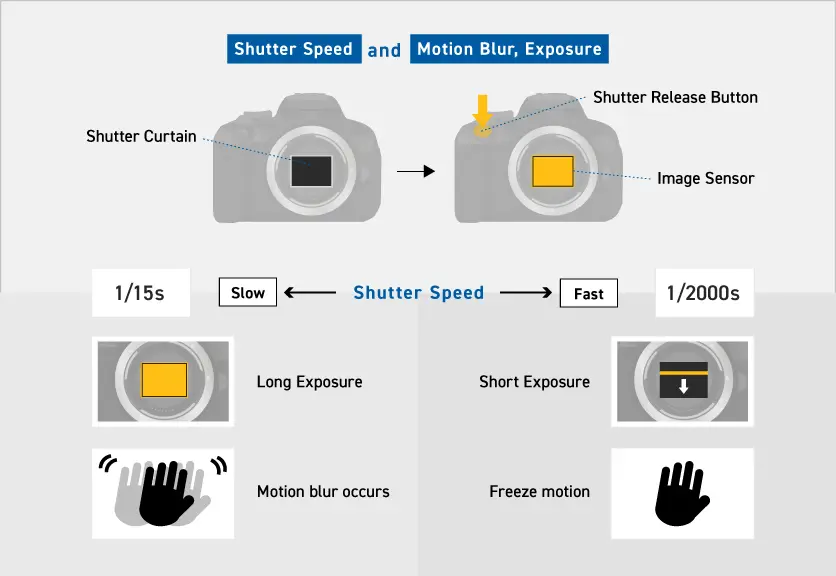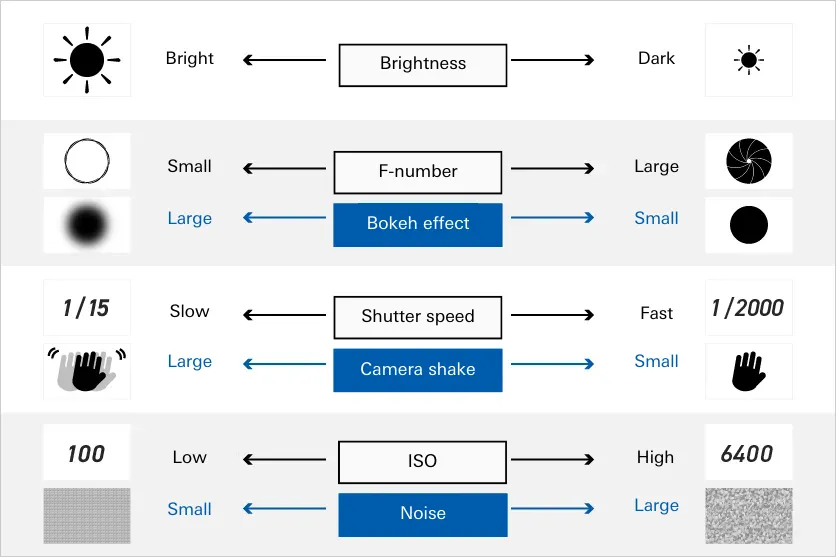December 20, 2024
What is shutter speed? Introducing setting guidelines and tips for matching the subject
What is shutter speed? Introducing setting guidelines and tips for matching the subject


Adjusting the brightness is an important point for taking good photos. Among them, the shutter speed is particularly important. By controlling the shutter speed properly, you can capture a fast-moving subject clearly, or conversely, intentionally create blur to take an impressive photo. In this article, we will introduce the basics of shutter speed and practical settings for various shooting scenes.
What is shutter speed?
Shutter speed is the length of time the camera shutter is open. In an interchangeable-lens camera, the image sensor receives light and records an image only during this time. Shutter speed is expressed as an integer or fraction, such as "30 seconds," "1 second," "1/60 seconds," "1/125 seconds," or "1/1000 seconds." The larger the number in the denominator, the shorter the shutter is open, and the "faster" the shutter speed is. For example, 1/1000 seconds is a much faster shutter speed than 1/60 seconds.
Relationship between shutter speed and exposure
Light hitting the image sensor of a camera is called exposure, and it refers to the amount of light the sensor receives. The brightness of the photo is determined as a result of exposure, and exposure is controlled by three factors: "F-number (aperture value)", "shutter speed", and "ISO sensitivity".
If the shutter speed is fast, the time the sensor receives light is short, so the photo tends to be dark. On the other hand, if the shutter speed is slow, the exposure is large and the photo is brighter.
Therefore, for example, if you want to freeze the movement of the subject by using a fast shutter speed, you need to adjust the brightness to the appropriate level by reducing the F-number or increasing the ISO sensitivity.
What is shutter speed priority mode?
Interchangeable-lens cameras are equipped with several shooting modes, and one of them is "shutter speed priority mode", which adjusts the exposure based on the shutter speed.
In this mode, when you set the shutter speed, the camera automatically adjusts the F-number and ISO sensitivity to ensure the appropriate exposure. When shooting fast-moving subjects such as sports or wild birds, this mode makes it easier to take clear photos with less blur.
Characteristics of fast shutter speeds
The characteristic of fast shutter speeds (high-speed shutters) such as 1/500 seconds or 1/1000 seconds is that they can capture a moment of a fast-moving subject sharply. For example, it is easier to capture decisive scenes in sports, splashing water, and wild birds flying in the sky with less blur and clearer images. In particular, high-speed shutters of 1/1000 seconds or more can clearly capture fleeting movements that cannot be captured by the naked eye.
However, the faster the shutter speed, the less light enters the sensor, so it is important to note that underexposure is likely to occur when shooting in dark places.
Characteristics of slow shutter speeds
A slow shutter speed (slow shutter) is a shooting method in which the shutter is left open for a long period of time, such as 1 second or 10 seconds. By opening the shutter for a long time, sufficient exposure can be ensured, making it suitable for shooting in low-light environments such as night scenes, starry skies, and dark rooms.
It can also be used as a creative expression method, for example, to express the flow of a waterfall as silk or to draw the light trails of car taillights. However, opening the shutter for a long time makes it more likely to cause camera shake and subject blur, so it is basically essential to use a tripod.
Guideline for shutter speed to reduce camera shake
There is a widely known rule of thumb to prevent camera shake when shooting handheld. It is a calculation formula called "1/focal length". For example, if you use a 50mm lens, you should set the shutter speed to 1/50 seconds, and if you use a 200mm lens, you should set the shutter speed to 1/200 seconds, so use the reciprocal of the focal length of the lens you are using as a guideline.
However, this is only a guideline, and the appropriate shutter speed will vary depending on the subject and the environment in which you are shooting. Adjust the shutter speed while taking test shots. Also, when shooting in dark places or intentionally using a slow shutter, use a tripod to take photos without blur.
Guidelines for shutter speeds by scene
Shutter speed settings vary greatly depending on the subject, shooting environment, and the image you want to capture. From here, we will introduce specific examples of shutter speed settings for each typical shooting scene. These numbers are only guidelines, but please use them as a reference when shooting.
Sports Day
Sports Day is a time to capture children's lively expressions and dynamic movements. To capture the moment they run or jump without blur, set a fast shutter speed of about 1/500 to 1/1000 seconds.
On the other hand, if you are aiming for a more realistic photo, panning is also effective. By shooting while following the subject, you can make the background flow and create a sense of dynamism. In this case, a shutter speed of about 1/60 to 1/125 seconds is appropriate.
Portrait
The guideline shutter speed for portrait photos is about 1/60 to 1/125 seconds. Using this range as a guide, you can capture facial expressions and natural gestures sharply without blurring. If the subject is moving, such as in a windy environment or while moving, it is better to set the shutter speed to about 1/250 seconds.
However, if there is insufficient light indoors or in the shade, set the shutter speed slower or adjust the ISO sensitivity to ensure natural brightness.
Night Scenery
When shooting night scenes, long exposure is the basis to beautifully express the glow of building lights and streetlights. If you use a tripod, you can capture night scenes with rich gradations at a slow shutter speed of a few seconds to about 30 seconds.
However, in tourist spots where it is difficult to use a tripod, handheld shooting is necessary. In that case, set the shutter speed to about 1/15 to 1/60 seconds as a guide, and increase the ISO sensitivity to ensure proper exposure while suppressing camera shake.
Wild Birds
When photographing wild birds, the shutter speed you use as a guideline needs to be changed depending on the image you want to capture. For example, if you are shooting a wild bird perched on a branch, a shutter speed of 1/250 to 1/500 seconds is the standard. On the other hand, if you are shooting a flying scene, you will need a shutter speed of 1/1000 to 1/2000 seconds, or even faster in some cases, to freeze the flapping of the wings.
In the early morning and evening when wild birds are most active, the light is weak, so increase the ISO sensitivity to ensure exposure. However, be careful as increasing the ISO sensitivity can cause noise.
Sports
When shooting sports, it is important to capture the decisive scenes that decide the outcome of the game and the lively moments of the players. For fast-moving sports such as basketball, baseball, and tennis, a high-speed shutter speed of 1/1000 seconds or more is the standard. In particular, if you want to sharply capture the movement of the ball and the expressions of the players, try an even faster shutter speed such as 1/2000 seconds.
On the other hand, panning shots are also effective if you want to express the dynamism of the players. In this case, set the shutter speed to about 1/125 to 1/250 seconds and shoot as if you are following the subject. The appropriate shutter speed will vary depending on the characteristics of the sport and the impression you want to express.
Starry Sky
To take a beautiful picture of a starry sky, it is essential to use a tripod. When capturing stars as points, for example, an exposure time of about 10 to 30 seconds is the standard with optical lenses. However, if the exposure time is too long, the stars will appear as lines due to the influence of the Earth's rotation, so care must be taken.
Conversely, when using this phenomenon to capture star trails, a very long exposure time of 15 minutes to several hours is required, and techniques such as comparative brightness synthesis are used. When photographing a relatively bright celestial body such as the moon, a relatively fast shutter speed of about 1/125 seconds will provide sufficient brightness.
Waterfall

When photographing a waterfall, the appropriate shutter speed will vary depending on what you want to express. If you want to capture the spray and shape of a waterfall in detail, a shutter speed of 1/500 seconds or faster is recommended. On the other hand, if you want to express the silky smoothness of water flow, a shutter speed of 1/2 seconds or slower is recommended.
However, if you shoot on a sunny day with a slow shutter speed, it is easy to overexpose, so it is a good idea to prepare an ND filter (neutral density filter).
Panning shot
Panning shots are a technique that expresses the dynamism of a subject by moving the camera as if it is chasing the subject, while the background is moving. The appropriate shutter speed varies depending on the speed of the subject's movement.
For example, when shooting pedestrians, about 1/30 seconds is a good guideline, and for runners and bicycles, about 1/60 seconds is a good guideline. For even faster subjects such as cars and trains, choose a faster shutter speed of about 1/125 seconds to 1/250 seconds.
On the other hand, panning shots are a technique that cannot be mastered overnight, and experience is important. It is a good idea to start with a slow shutter speed and practice repeatedly, gradually challenging yourself with faster shutter speeds and subjects.
Light trails
Photos that capture light trails, such as cars driving through a city, have a fantastic and cool image. When photographing the trails of car lights, a long exposure of about 10 to 30 seconds is generally used. The optimal time varies depending on the traffic volume and the speed of the cars, but it is a good idea to start with about 15 seconds.
It is also effective to use "rear curtain sync" to make such light trails even more impressive. Rear curtain sync is a technique in which the flash is fired just before the shutter closes, and its characteristic is that the light trail is naturally expressed along the direction of movement. For example, when using it to photograph a moving car, the car body will be sharply captured without blurring, while the lights will leave a beautiful light trail. This allows the flash to be fired at the end of the movement, making the movement of the subject more clear.
Another subject that creates beautiful light trails is fireworks. To capture the trail of fireworks, you need to capture the entire sequence of movements from launch to blooming to disappearing beautifully, so an exposure time of about 4 to 8 seconds is recommended. A tripod is essential for both types of photography, and we recommend using a self-timer or remote shutter when taking the shutter.
Video Shooting
When shooting video, a shutter speed of 1/50 to 1/60 seconds is the standard. This is because this shutter speed can express natural movements when the frame rate is set to 24fps or 30fps, which are common for video shooting.
Please note that by choosing a shutter speed that is a multiple of 50, such as 1/50 or 1/100 seconds in eastern Japan (50Hz areas), or a multiple of 60, such as 1/60 or 1/120 seconds in western Japan (60Hz areas), you can reduce flicker (screen flicker) caused by artificial light sources such as fluorescent lights.
Take beautiful photos with the optimal shutter speed
Shutter speed is an important factor that is related not only to exposure but also to artistic expression in photography. First, try taking photos using a basic shutter speed as a guide, and once you get used to it, try creative expression by intentionally changing the shutter speed. By repeatedly taking photos of various subjects, you will naturally acquire a sense of shutter speed.

Lens Featured in this Impression
-
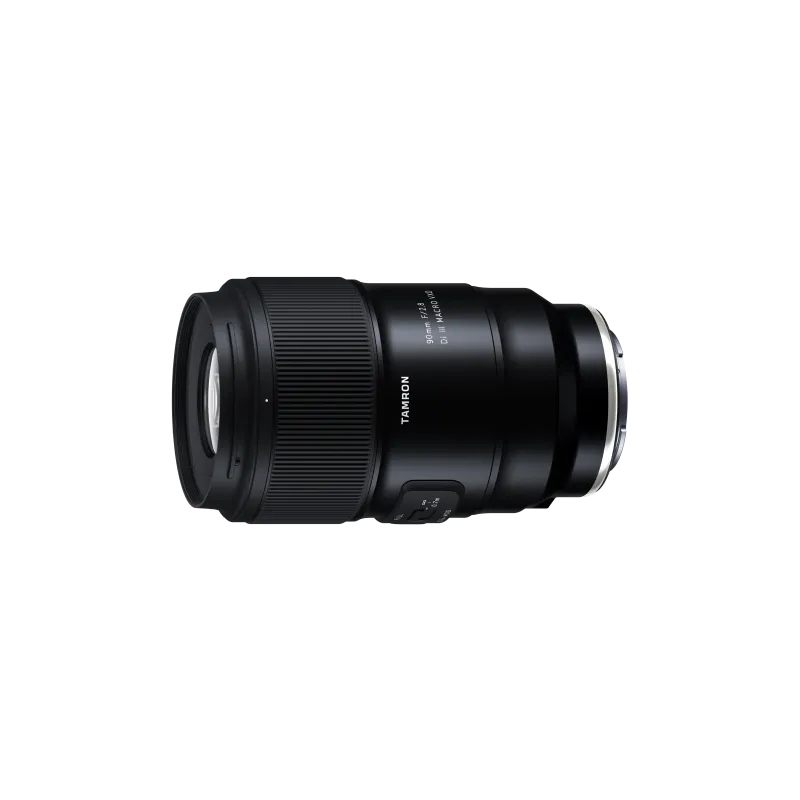
-
90mm F/2.8 Di III MACRO VXD f072(Model )
The 90mm F/2.8 Di III MACRO VXD (Model F072) is the mirrorless version of the TAMRON 90mm macro lens, beloved for many years. It offers outstanding resolution and optical performance, featuring TAMRON’s first 12-blade circular aperture for stunning bokeh and starburst effects. Its lightweight, compact design ensures easy portability, and the new hood with sliding window simplifies filter use. The lens is also compatible with TAMRON Lens Utility™ and has high-speed, high-precision AF, expanding possibilities for photography and videography. This lens blends TAMRON's legacy of brilliance with advanced technology, marking a new chapter in the 90mm macro lens history.
-

-
50-400mm F/4.5-6.3 Di III VC VXD a067(Model )
The 50-400mm F/4.5-6.3 Di III VC VXD (Model A067) is an ultra-telephoto zoom lens with an 8x zoom starting at 50mm at the wide-angle end and compatible with full-frame mirrorless cameras. The lens delivers uncompromised high image quality over the entire 50-400mm focal length range, yet is as compact and lightweight as a 100-400mm class lens. Equipped with the VXD mechanism and the VC mechanism, the lens can quickly focus on the subject's movement when shooting sports and wild birds. The 50-400mm F4.5-6.3 VC is a new ultra-telephoto zoom lens that combines unparalleled image quality and mobility.
-
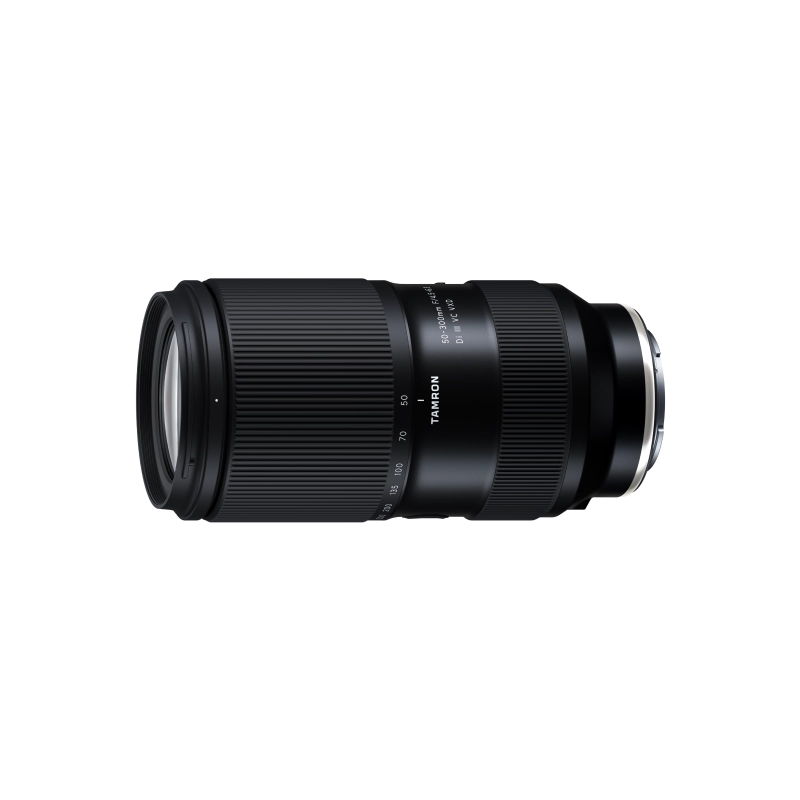
-
50-300mm F/4.5-6.3 Di III VC VXD a069(Model )
50-300mm F/4.5-6.3 Di III VC VXD (Model A069) is a 6x telephoto zoom lens for Sony E-mount that delivers outstanding convenience and image quality. Discover the groundbreaking capabilities of a 300mm telephoto zoom that starts from 50mm at the wide end.
-
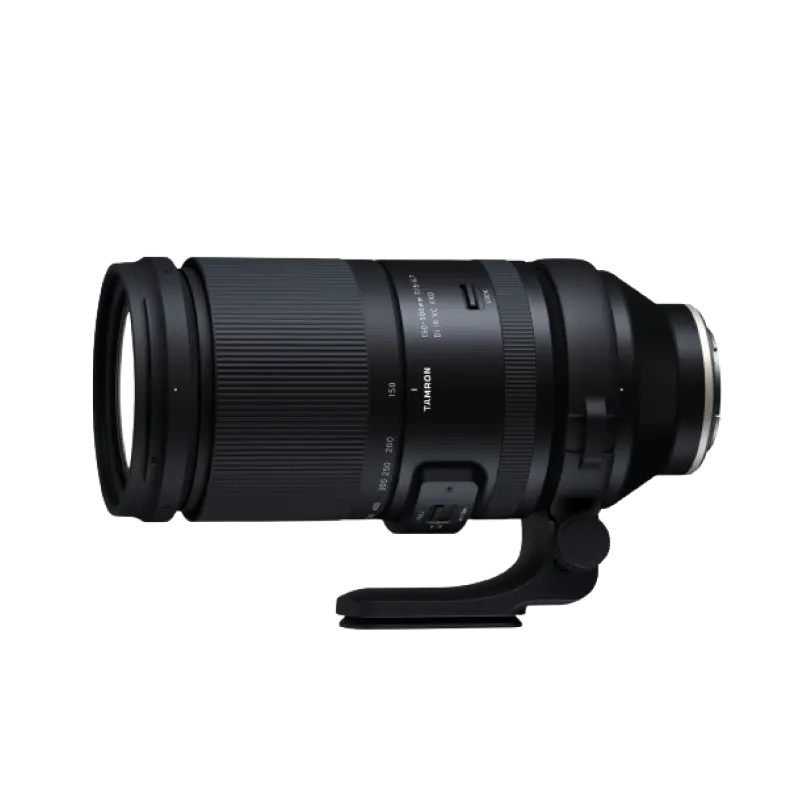
-
150-500mm F/5-6.7 Di III VC VXD a057(Model )
The 150-500mm F/5-6.7 Di III VC VXD (Model A057) is compact enough to be handheld while maintaining a focal length of 500mm on the telephoto end. It allows users to easily enjoy the world of the 500mm ultra-telephoto lens while maintaining its high image quality. The high-speed, high-precision AF with excellent tracking performance and the VC mechanism support handheld shooting in the ultra-telephoto range.
-

-
20-40mm F/2.8 Di III VXD a062(Model )
The 20-40mm F/2.8 Di III VXD (Model A062) is a new large-aperture standard zoom lens that thoroughly pursues portability. While covering the range from the ultra-wide angle of 20mm to the standard range of 40mm, it is the smallest and lightest in its class. It also offers high image quality throughout the entire zoom range, making it useful not only for still image shooting but also for video recording such as vlogging. The VXD, which is quiet and agile, achieves high-speed, high-precision autofocusing. It is a new, unprecedented large-aperture standard zoom lens that allows users to easily enjoy taking out and shooting both still and video.

